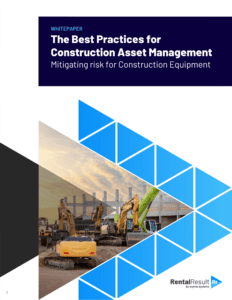(No, we don’t need your email)
The Best Practices for Construction Asset Management
Mitigating Risk for Construction Equipment
Whether you are managing large or small construction equipment and tools, we recommend the following best practices gathered from leading, large construction companies to improve your construction equipment management processes and control costs.
Introduction
Construction companies estimate that the equipment they own or lease represents 20% of their costs. But in reality, most are not sure of their exact equipment costs at a job site level and often ROI at an asset level is a metric that either cannot be or is not tracked in the corporate ERP. Without specialized asset management software, companies may not be depreciating, maintaining, or insuring their equipment properly, leading to unnecessary risks to employees, margins, and job site productivity.
Whether you are managing large or small construction equipment and tools, we recommended the following best practices gathered from leading, large construction companies to improve your construction equipment management processes and control costs. 
Procuring Construction Equipment
Procuring equipment for your construction fleet may begin from an annual or quarterly fleet planning process or based on individual demand from specific projects or individual job sites. However, it begins, your procurement process needs to feed directly and immediately into both your asset register to track equipment value and into your physical availability information to allow your job sites and equipment facilities to understand the deployment potential.
FULFILMENT BY PURCHASING NEW EQUIPMENT
There are always times when a particular project creates procurement needs. Just as you need to be able to link re-rent purchases directly to your project, being able to tie certain types of procurement to your project demand can also be helpful.
This is one of those areas that is likely to raise questions depending on the nature of how your internal equipment business is integrated with your corporate ERP. For many construction companies, managing re-rents through the equipment management software makes perfect sense as it’s not an area where ERP systems such as Oracle, JDE, SAP or CMiC shine. However, when it comes to buying assets, if your approval and budgetary processes are all embedded firmly in your ERP, then you don’t want your equipment management software involved in the purchasing process at all. If this is the case, then consider using the functionality in your equipment management software as a trigger to either send data or
at least email a request over to the procurement team or into the ERP system. That way, you have something to track in terms of requested data and reason for why you want the asset. You’ll then need to have a mechanism (either manual or automated) to make your new assets available in your equipment management software once they are received.
ADDED VALUE: FULLY MANAGING EQUIPMENT PROCUREMENT
If your corporate policies, finance and IT folks are all agnostic on where equipment purchasing is done, then it’s a great idea to explore your construction equipment management software’s capabilities. After all, that’s where you’ll be working 99% of the time, so being able to completely manage your equipment procurement in the same system can make life much easier. It puts you in control of your own metrics and removes any delay in making construction equipment available for use.
MITIGATING RISK: STANDARDIZATION OF FLEET
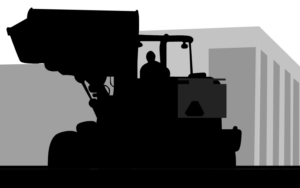 If you haven’t yet moved towards central fleet purchasing or at least standardizing a catalog of what can be purchased, it’s worth considering. With skilled labor thin on the ground and a mind bogglingly diverse range of manufacturers and products on the market, standardization can reduce the potential for mistakes as employees move from job site to job site and reduce the training time required to use a particular type of equipment. Less variation means less complication and familiarity with your fleet makes it easier for employees to transition from job site to job site.
If you haven’t yet moved towards central fleet purchasing or at least standardizing a catalog of what can be purchased, it’s worth considering. With skilled labor thin on the ground and a mind bogglingly diverse range of manufacturers and products on the market, standardization can reduce the potential for mistakes as employees move from job site to job site and reduce the training time required to use a particular type of equipment. Less variation means less complication and familiarity with your fleet makes it easier for employees to transition from job site to job site.
FULFILMENT FROM AN EXTERNAL RENTAL VENDOR
Some construction companies no longer use their own equipment, or perhaps a very limited fleet of owned equipment. Even if your owned equipment fleet is very large, the chances are that at some point you’ll need to rent equipment in from an outside vendor. Your equipment management system needs to be able to manage that process by ensuring the equipment is delivered to the job site, but also managing the associated costs on the accounts payable (AP) side of the transaction.
ONE-OFF RE-RENT PROCUREMENT
When you simply need to increase your fleet because you’re running at 100% utilization, or it’s just a one-off specialty items, your equipment management software needs to be flexible enough to let you incorporate the occasional re-rental within the core process. That also means that if the decision to re-rent happens late in the process (for example, you discover while loading the truck that your excavator has blown a hose) it needs to be an easy process to turn your own equipment fulfilment into external equipment fulfilment without having to re-write the documentation from scratch.
The decision to fulfil all or part of a job site requisition from an external vendor should also feed directly into how that equipment is going to be deployed. That means that you need to be able to track drop-shipments rather than create back-office paperwork to mimic a delivery via your own facility, or even worse, have no process at all to track the shipment to the job site.
Mobile apps dominate in this environment and prevent disputes when job sites complain that something never arrived or fail to let anyone know when it’s off rented. Enabling the job site to confirm the receipt electronically makes it a lot easier for all parties to stay in control.
TOTAL RE-RENTS PROCUREMENT
![]() If your construction business doesn’t own a single piece of equipment or a single tool, or if you have specific lines of equipment that you know upfront will only be supplied externally, then make sure your construction equipment management software can handle rentals. Your process workflow should be able to drive a re-rental workflow so that your requisition flows neatly into a re-rent procurement process that expects drop shipments and external charges as part of its normal flow.
If your construction business doesn’t own a single piece of equipment or a single tool, or if you have specific lines of equipment that you know upfront will only be supplied externally, then make sure your construction equipment management software can handle rentals. Your process workflow should be able to drive a re-rental workflow so that your requisition flows neatly into a re-rent procurement process that expects drop shipments and external charges as part of its normal flow.
MITIGATING RISK: AUTOMATING THE RE-RENT PROCESS
![]() If you know that certain categories or product lines are always going to be re-rented, then you should be able to consider automating the re-rent process. For example, if you have three preferred vendors for mobile cranes, then think of the advantage of being able to auto-generate a request for quote to all three vendors the moment a requisition is created. Providing a supplier portal so that the supplier can confirm pricing and additional charges (such as transport and insurance) can reduce the risk of unexpected charges hitting the AP when an invoice is finally received. Real added value comes from reducing the elapsed time between a requisition and vendor confirmation. This gives you plenty of time to look for other sources if none of your preferred vendors can supply you with the appropriate parameters.
If you know that certain categories or product lines are always going to be re-rented, then you should be able to consider automating the re-rent process. For example, if you have three preferred vendors for mobile cranes, then think of the advantage of being able to auto-generate a request for quote to all three vendors the moment a requisition is created. Providing a supplier portal so that the supplier can confirm pricing and additional charges (such as transport and insurance) can reduce the risk of unexpected charges hitting the AP when an invoice is finally received. Real added value comes from reducing the elapsed time between a requisition and vendor confirmation. This gives you plenty of time to look for other sources if none of your preferred vendors can supply you with the appropriate parameters.
Construction Equipment Management
Capturing Real Time Data
Telematics and GPS tracking are part of the arsenal of tools that equipment managers can use to keep track of their assets in the field. But these technologies offer more than simply knowing where the asset is and whether it’s doing something. Every piece of equipment you own – whether it’s a piece of heavy equipment or a small tool – has its own maintenance requirements. If any of your equipment has tracking devices, then you can read its data and use that information to help you manage your maintenance processes and reduce the risk of equipment breakdown or malfunction on the job site.
For certain types of construction equipment, you may want to take that a stage further and use engine data from telematics to determine costs or charges to the job site. Even if you have a base cost per day / week / month for a generator a pump, you may want to charge the job site extra for non-stop working, or excess hours beyond a basic double shift cost. 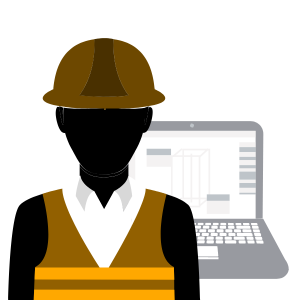
MITIGATING RISK: USING REAL TIME DATA
When you are measuring telematics readings you have a real chance to improve safety and mitigate risk for your end users and your job site. For example, predicting engine or pump failure as it starts to overheat can deliver true value to the job site and the project, reducing the risk of overruns, expensive delays and risks to human safety.
CONSTRUCTION EQUIPMENT FINANCIAL ASSET MANAGEMENT
The reality is that assets are at the heart of every equipment management business. You can’t calculate ROI or understand your financial utilization unless you also understand the value of your assets. Let’s face it, construction equipment can get very complicated from multiple components with different technical and financial lives to huge volumes of low value bulk assets (like scaffolding or formwork) which adds millions of dollars on the books and still needs to be depreciated every month.
- You need to ensure that your equipment management software is flexible enough to allow you to define whether your assets are tracked individually as serialized equipment, held as bulk quantities or as a mixture of the two.
- You need to be able to track things you don’t own alongside those that you do and report on comparative utilization. That data is very useful in helping you decide whether it is worth adding additional items to your own fleet.
- You need to make sure you can keep track of every activity that can affect value or ROI from maintenance activities, damage, warranty repairs, financial revaluations and costs.
- There should be no need to update the fixed asset system manually if you are using the equipment management system in its entirety. For example, if you decide to refurbish a truck in your workshop, the cost of certain types of parts and labor may be automatically capitalized to the value of the truck on the books.
- If your ERP is your main system of record, you also need to ensure that anything you do to your assets in the equipment management system can be sent over as data to the ERP to make sure your ROI can be calculated effectively in your corporate ERP.
 MITIGATING RISK: IDENTIFYING POOR ROI
MITIGATING RISK: IDENTIFYING POOR ROI
Capturing data within your management software so that you can truly understand all forms of cost against your equipment allows you to identify equipment with low or poor ROI early and react accordingly. In some cases that may mean educating job sites away from certain types of equipment or specific manufacturers if you can prove that some equipment simply isn’t economically viable in your environment.
WHAT IS THE BEST WAY TO STAY ON TOP OF SCHEDULED MAINTENANCE?
You need to decide what types of service events you want to track and how reminders should be triggered. Preventative maintenance can certainly be tracked in a spreadsheet, but the chances are your construction equipment management software is going to give you more options. You can trigger maintenance activity based on real-world events such as machine usage, return from the job site, damage and other types of events. Other service events are purely time based, such as replacing decals or tracking test certificates. More importantly, if you can systemize your maintenance data effectively you can also provide information around risk mitigation to your job sites.
However, you look at your scheduled servicing, once your trigger is activated, you need to ensure that you can track that the service has taken place, any faults are noted or fixed and your data is updated. Mobile apps can be a great tool for ensuring your maintenance data is updated in real time and is more efficient for your technicians. Mobile makes it much easier to push your maintenance process out to the field.
Maintenance on equipment that is on the job site for long periods of time is especially challenging since your equipment could either be sitting idle or overworked. To understand which, use telematics to capture machine hours electronically and feed that back to your core system in real time. Even if you don’t use telematics, you can use historical averages to track the likely usage on the job site and estimate when servicing is probably required.
If your equipment requires any type of test, examination or calibration process, then you should also consider sending out regular updates to your job sites. Reminding them of upcoming re-test or re-calibration dates via email or text is a good way of ensuring that the equipment is available to your technicians when they visit. You can make this information visible to them whenever they check out their equipment on site so that they never miss essential maintenance.
Don’t forget your construction equipment management software builds up good historical data that says how long different preventative maintenance takes, so you can estimate the time the equipment will be available to use again. You can also approach manufacturers to find their recommended preventative maintenance times to understand the efficiency of your own technicians. Using mobile apps to capture data in real time means you can track the actual elapsed time on a service more effectively.
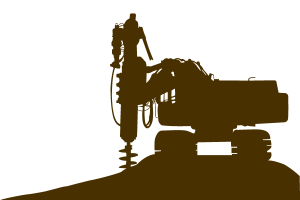 MANAGING YOUR FLEET’S HEALTH – MAKING EQUIPMENT AVAILABLE FOR USE
MANAGING YOUR FLEET’S HEALTH – MAKING EQUIPMENT AVAILABLE FOR USE
Construction companies have different approaches to when they make equipment ready for use. This can change based on current utilization, how busy the shop is, the speed of change overs and likely demand.
Fundamentally there are two different approaches.
- Equipment is returned to “ready to use” status as soon as it is returned from the job site and inspected.
- Equipment is only made “ready to use” when there is a confirmed requisition on the books.
Whichever route you choose, the essential pieces remain the same: you need to track that inspections have been completed, pick out any equipment needing additional repairs and make the process as efficient as possible. Whether your metric is time to available after return, or time to available after a requisition is created – you need to track how efficient your teams are at getting your equipment ready for service.
MITIGATING RISK: MANAGING SCHEDULED MAINTENANCE REDUCES DOWNTIME
Keeping up to date your scheduled maintenance should keep your equipment running smoothly, reduce the potential risk of onsite breakdown and ensure that your equipment meets health and safety guidelines. This ensures any subsequent failure cannot be blamed on poor maintenance. For many job sites, the customer and main contractor may even require you to provide service or maintenance history for any equipment you use on site.
UNPLANNED MAINTENANCE: HOW LONG DOES IT TAKE YOU TO BRING IT BACK UP?
When a piece of equipment goes down in the field it costs you more than just the repair costs. It damages your relationship with your jobsite, costs them time and potentially eats into your project margins if you are holding up a work program. Managing your scheduled maintenance and tracking telematics data in the field based on actual usage are both excellent ways to mitigate the potential risk of equipment failure.
 LET YOUR EQUIPMENT MANAGEMENT SOFTWARE ASSIST THE PROCESS
LET YOUR EQUIPMENT MANAGEMENT SOFTWARE ASSIST THE PROCESS
- Track field service calls so that you can ensure you keep your job site informed of progress on resolving the issue whether that’s sending a technician out to the job site, waiting for an external service engineer or sending out a replacement.
- Utilize field service mobile apps so that you can communicate effectively with your technicians in the field, keep track of their progress and provide instantaneous feedback to your customers
- Track key part inventory in field service trucks and if appropriate keep a mobile stock of smaller tools and other items in service trucks for in-field swap out.
- If you must plan a full-scale swap out, keep track of the returning asset, drop it straight into a major repair status and create a work order to track the full costs. Remember you may have the opportunity to charge the repairs back to the job site if it’s obvious they have damaged the machine through incorrect usage.
MITIGATING RISK: REDUCING ELAPSED TIME ON A BREAKDOWN
The speed of resolution of a breakdown has an absolute effect on both your utilization and your ROI. The longer it takes to get the asset back up the more utilization you’ve lost and the more expensive the downtime is likely to be. The effect of a breakdown on a project can be immense, not just affecting the individual asset but preventing work continuing on either part or potentially all of a project while the job site waits for a fix or a replacement asset.
WHEN TO STOP THE REPAIR?
There are always occasions when the cost of a repair is simply not economically viable. Unfortunately, it is something that isn’t always caught in time unless your maintenance processes are being effectively tracked. Although it may take a little extra time, adding in an approval process to your work orders (either specific types of repair or all scheduled maintenance events) so that no parts or active labor is applied until after an estimate quote has been put together may be appropriate. Comparing your current book value and costs to date against an estimated cost of repair may be enough to stop work before you end up spending money unnecessarily.
If you do decide to add approval processes and estimates into your work order process, make sure you keep track of metrics like time to approve and estimate against actual. You may find that the added approval steps simply slows the process down without generating the benefits.
Disposing of Construction Equipment
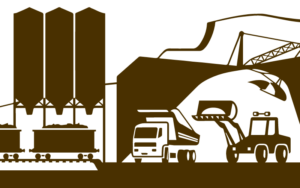 Just as utilization and demand drive your decisions to buy, they also drive your decisions to sell. Drops in utilization on individual machines can mean that it is simply looking too old to send out or spending too long in the shop. Sometimes it is not the age of the machine that is the issue, it’s simply a change in regulatory process (ie: Tier 3 / Tier 4) or obsolete software or technical specification. Sometimes an entire model or even manufacturer can become so unpopular that job sites simply refuse to entertain the brand because of perceived job site failures or breakdowns. Alongside your utilization data, calculating your ROI against your individual machines can start to tell you that the economics of ownership are shifting against a particular machine.
Just as utilization and demand drive your decisions to buy, they also drive your decisions to sell. Drops in utilization on individual machines can mean that it is simply looking too old to send out or spending too long in the shop. Sometimes it is not the age of the machine that is the issue, it’s simply a change in regulatory process (ie: Tier 3 / Tier 4) or obsolete software or technical specification. Sometimes an entire model or even manufacturer can become so unpopular that job sites simply refuse to entertain the brand because of perceived job site failures or breakdowns. Alongside your utilization data, calculating your ROI against your individual machines can start to tell you that the economics of ownership are shifting against a particular machine.
MEASURING & ANALYZING THE LIFE TO DATE COSTS OF EQUIPMENT
Philosophically there is a point in the life of a piece of construction equipment where costs are higher than the returns. And at that precise time you should sell the construction equipment and replace it with a newer model – let’s call it the point of inflection. One way we can estimate the point of inflection is to look at the annual and life to date costs of a piece of construction equipment. While your depreciation and purchase costs will almost certainly be in your asset register in your ERP, if you are tracking your maintenance and repair costs within your construction equipment management software you can bring the two sets of data together. Make sure you use your construction equipment management software to track maintenance costs and ensure you can split out scheduled maintenance, warranty repairs, ad-hoc or damage repairs, parts, and labor to give you a total picture of the life to date costs.
It’s easy to forget about certain types of costs when you look at equipment over time. If your equipment is moving through a lot of short term deployments and just requires a visual inspection before it’s returned to service you might not be adding that to your maintenance calculations. But even 10 minutes of a visual inspection has a cost. If you don’t want to use full-blown work orders and timesheets for such actions, automate it so you can add a standard maintenance cost. For example $15 each time you confirm a visual inspection has occurred. You can use the same concept for parts costs on work orders if you don’t want to actually maintain a full parts inventory.
Theoretically equipment costs change over time, the older the piece of equipment the more it will cost you on an annualized basis. If you are questioning when to sell, it is not necessarily just your cost to date so much as the potential cost over the next 12 months. Working out your category/manufacturer/model average annualized costs can be more relevant than purely concentrating on an individual asset and effectively using predictive analysis to work out the potential costs going forward against the optimum time to sell.
RE-SALE VALUE
![]() Another general rule of thumb is to replace your construction equipment once your maintenance costs exceeds 30% of the machine’s resale value. Using minimum residual values against your depreciation policy is an excellent way of keeping track of this metric, as you can build in an optimum resale price from day one and track your costs against that number. For more accuracy, you can load data from services like Rouse Analytics or your own market analysis to keep track of variances in re-sale market prices from month-to-month giving you a real-time target rather than a number based on potentially out-of-date data.
Another general rule of thumb is to replace your construction equipment once your maintenance costs exceeds 30% of the machine’s resale value. Using minimum residual values against your depreciation policy is an excellent way of keeping track of this metric, as you can build in an optimum resale price from day one and track your costs against that number. For more accuracy, you can load data from services like Rouse Analytics or your own market analysis to keep track of variances in re-sale market prices from month-to-month giving you a real-time target rather than a number based on potentially out-of-date data.
UTILIZATION & ROI
![]() When it comes to managing your equipment fleet, utilization is an important area to understand and manage. Measuring both time and dollar utilization of your fleet (even if you are purely using a cost calculation and not charging “rates” on your machines and individual category classes) is critical to running a successful fleet and managing your assets. Asset acquisitions, asset maintenance, and disposals are all driven in part by your utilization metrics.
When it comes to managing your equipment fleet, utilization is an important area to understand and manage. Measuring both time and dollar utilization of your fleet (even if you are purely using a cost calculation and not charging “rates” on your machines and individual category classes) is critical to running a successful fleet and managing your assets. Asset acquisitions, asset maintenance, and disposals are all driven in part by your utilization metrics.
TIME & DOLLAR UTILIZATION METRICS WORK TOGETHER TO TELL THE STORY OF YOUR FLEET
Time utilization calculates the amount of time your equipment is out on the job site against the time it is available to be used. Different construction companies may calculate days differently, but as long as you are consistent with your methodology, you can measure and track changes through time. At its simplest: days used/days available = time utilization. For example: 200 days used/365 days in a year = 55% time utilization.
Dollar utilization is commonly used in the rental industry. It is the annual rental revenue divided by the acquisition costs. Annual revenue collected/acquisition cost = dollar utilization. For example: $25,000 rental revenue per year / $100,000 cost = 25% dollar utilization.
If your construction business doesn’t really think of equipment deployment as a “rental” process, then think about this calculation in terms of cost accruals or standard costing models. For example: $25,000 job costs recharged per year / $100,000 cost = 25% dollar utilization.
Comparing these two metrics can provide an insight on what actions you should take to either leverage a strength or address a challenge. The most important part is ensuring that your equipment management software is equipped to measure and track both metrics. Your software should provide you with data in a format you can leverage for communications with the rest of your business about margins, equipment value and internal equipment management value.
MITIGATING RISK: ELIMINATE DOUBLE ENTRY BY INTEGRATING YOUR ASSET MANAGEMENT PROCESSES
Real-time integration removes any need for double-keying between systems, eradicating sources of error. The value of removing double-entry is one of the single most important things that you can achieve for your business overall and it’s one of the most common complaints we hear from anyone involved in construction equipment management. If your ERP needs to track basic asset detail, but not at the level you want to store for the equipment management business, then use your construction equipment management software to provide the detail and integrate summary level data back to your ERP.
CONCLUSION
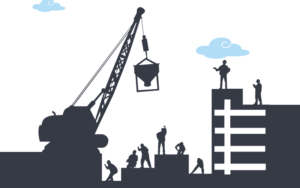 To deliver real benefit to your construction business, you need to be able to bring the entire construction equipment management process together. Whether you are an equipment facility manager, logistics driver, field technician, or on a job site out in the field, you need to have visibility and access to all your physical assets in real-time. Your asset management process is a key part of your equipment business and needs a robust software solution. Real-time processing, visibility and information are the key drivers of efficiency and productivity to deliver the right equipment, when it’s needed, in a timely manner ensuring that you keep track of utilization, ROI, and asset performance.
To deliver real benefit to your construction business, you need to be able to bring the entire construction equipment management process together. Whether you are an equipment facility manager, logistics driver, field technician, or on a job site out in the field, you need to have visibility and access to all your physical assets in real-time. Your asset management process is a key part of your equipment business and needs a robust software solution. Real-time processing, visibility and information are the key drivers of efficiency and productivity to deliver the right equipment, when it’s needed, in a timely manner ensuring that you keep track of utilization, ROI, and asset performance.
ABOUT WYNNE SYSTEMS
Wynne Systems is an industry leader in software solutions for the construction industry with headquarter offices in the United States and United Kingdom. Since 1983, Wynne has provided complete software solutions to construction companies of all sizes. RentalResult is the premier software solution for construction equipment and tool tracking for enterprise construction industries and specialty rental firms.

